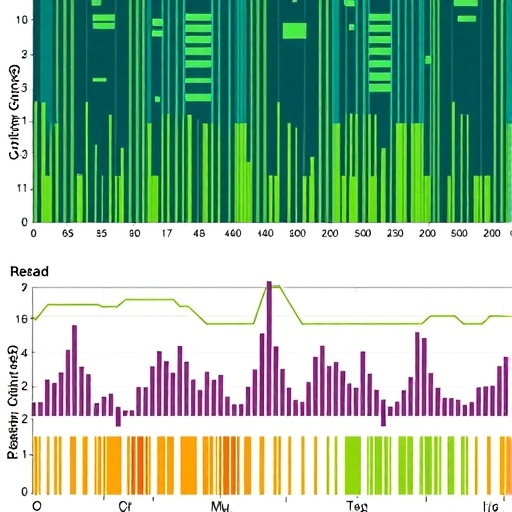
Credit: L. Brian Stauffer
CHAMPAIGN, Ill. — Materials that contain special polymer molecules may someday be able to warn us when they are about to fail, researchers said. Engineers at the University of Illinois Urbana-Champaign have improved their previously developed force-sensitive molecules, called mechanophores, to produce reversible, rapid and vibrant color change when a force is applied.
The new study led by postdoctoral researcher Hai Qian, materials science and engineering professor and head Nancy Sottos, and Beckman Institute of Advanced Science and Technology director Jeffrey Moore is published in the journal Chem.
Moore’s team has been working with mechanophores for more than a decade, but past efforts have produced molecules that were slow to react and return to their original state, if at all. This inability to produce an on/off-like response has limited their use as molecular probes that continuously report a material’s mechanical condition, the study reports.
“The color change is the result of stress applied to the bonds that connect the mechanophores to a polymer chain,” Qian said. “We are now bonding the mechanophores to polymer chains using a different arrangement scheme, called an oxazine structure. The new structure allows for an instantaneous and reversible color change, so instead of the polymer slowly becoming darker over time, the color changes quickly when the force is applied and disappears when the force is removed.”
See a videos demonstrating the new oxazine structure and the older spiropyran structure.
Materials that contain the new mechanophores could be used as stress sensors to enable researchers to study the effects of stress on materials before they fail.
“The rapid response and reversibility will allow engineers to better monitor, quickly detect and respond rapidly to an overstressed structure in the lab and eventually in the field,” Sottos said.
A long-standing challenge in materials science has been making observations regarding mechanical load and other stresses in materials at the single-molecule level. Although this advancement cannot do this, Moore says the goal is nearer with the development of this new type of mechanophores.
“There is more work to do, but this advancement opens the door to detailed insight of what’s going on at the molecular level in all sorts of materials,” Moore said. “In the area of biomechanics, for example, we see this research as a steppingstone toward better monitoring of how our bodies react to external forces from the cellular level and beyond.”
###
Illinois graduate students Doug Ivanoff and Abigail Halmes and undergraduate student Nathan Purwanto also participated in the study.
The Air Force Office of Scientific Research Center of Excellence supported the research.
Moore also is affiliated with the Center for Advanced Study, the Materials Research Laboratory, the Carl R. Woese Institute for Genomic Biology, the Carle Illinois College of Medicine, chemistry and materials science and engineering. Sottos also is affiliated is CAS, MRL, the Beckman Institute, mechanical engineering and science and aerospace.
Editor’s notes:
To reach Jeffrey Moore, call 217-244-5289; [email protected].
To reach Nancy Sottos, call 217-333-1041; email [email protected].
The paper “Fast, reversible mechanochromism of regioisomeric oxazine mechanophores: Developing in situ responsive force probes for polymeric materials” is available online and from the U. of I. News Bureau. DOI: 10.1016/j.chempr.2021.02.014.
Media Contact
Lois Yoksoulian
[email protected]
Original Source
https:/
Related Journal Article
http://dx.




